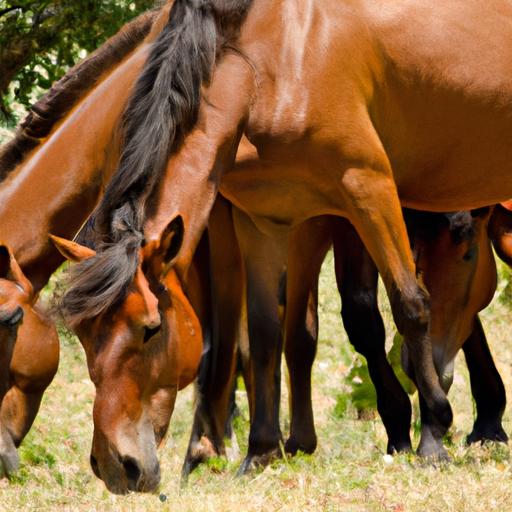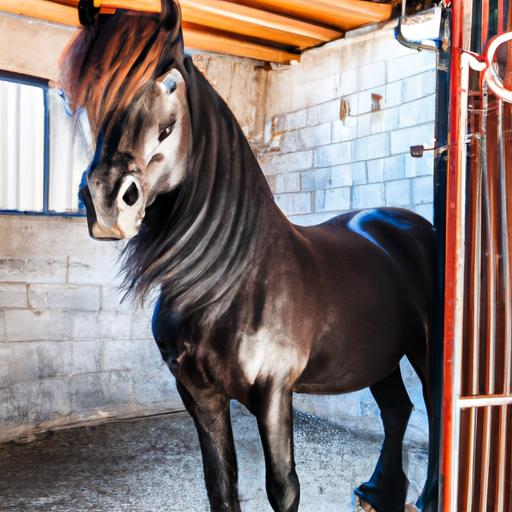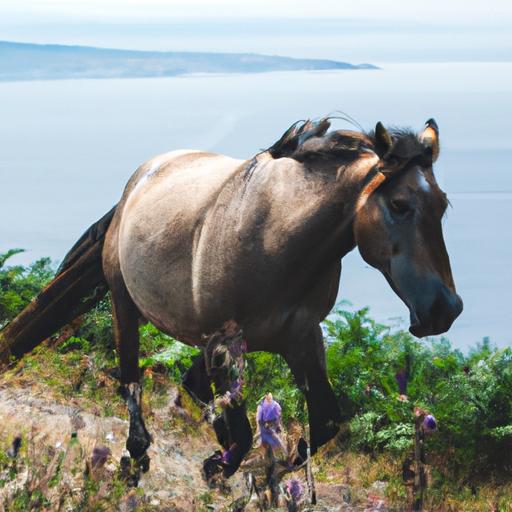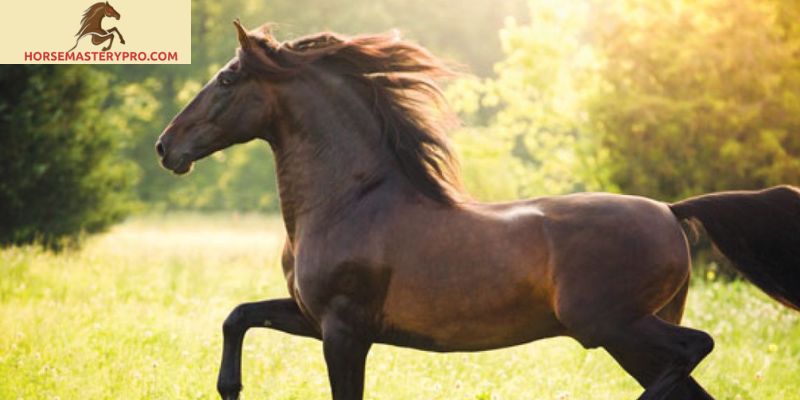Discover the captivating history, traits, and cultural significance of the Spanish Mustang breed and explore the diverse horse breeds of spain.
Introduction to Horse Breeds of Spain

Have you ever wondered about the magnificent horse breeds that have graced the landscapes of Spain for centuries? From the noble Andalusian to the spirited Spanish Mustang, the horse breeds of Spain hold a captivating allure that reflects the country’s rich equestrian heritage. In this article, we will delve into the captivating world of Spanish equines, exploring their importance in Spanish culture and shedding light on the diverse and significant horse breeds that call Spain their home.
When it comes to Spanish culture, horse breeds have played a pivotal role throughout history. These majestic creatures have been intertwined with Spanish traditions, folklore, and even warfare. From the grand festivals of Seville to the equestrian artistry of the Spanish Riding School, horses have been at the heart of Spanish identity, capturing the imaginations of both locals and visitors alike.
The diversity of horse breeds in Spain is truly remarkable. Each breed boasts its own distinctive features, temperaments, and historical significance. Whether you seek the elegance of the Andalusian, the resilience of the Spanish Mustang, or the endurance of the Asturian, Spanish horse breeds offer a tapestry of traits that cater to various equestrian pursuits.
As we embark on this exploration of Spanish horse breeds, prepare to be enthralled by their beauty, strength, and versatility. Join me on this journey as we unravel the stories behind these remarkable equines and celebrate the invaluable contribution they have made to Spanish culture throughout the ages.
So, saddle up and get ready to embark on an enchanting journey through the captivating world of horse breeds in Spain. Together, we will unravel the tapestry of Spanish equestrian heritage and discover the diverse and significant equine companions that have shaped the cultural landscape of this remarkable country.
Andalusian Horse Breed

History and Origin of the Andalusian Horse
The Andalusian horse, also known as the Pure Spanish Horse or Pura Raza Española (PRE), holds a storied past that can be traced back over thousands of years. With its roots firmly planted in the Iberian Peninsula, this noble breed has captured the hearts of equestrian enthusiasts worldwide.
The origins of the Andalusian horse date back to the ancient Iberian horse, which existed during the time of the Roman Empire. Throughout history, this remarkable breed has been influenced by various civilizations, including the Moors and the Carthaginians. The selective breeding practices of these cultures contributed to the refinement and development of the Andalusian horse we know today.
Physical Characteristics and Unique Traits
One glance at the Andalusian horse and you’ll be captivated by its striking beauty and regal presence. Known for its compact yet powerful build, the Andalusian stands at an average height of 15 to 16 hands, showcasing a harmonious blend of strength and elegance.
The breed is characterized by its well-rounded, muscular body with a strong, arched neck, expressive eyes, and a broad forehead. One of the most defining features of the Andalusian is its long, flowing mane and tail, adding to its allure and majestic appearance.
What truly sets the Andalusian horse apart are its unique traits. With an exceptional temperament, these horses are known for their intelligence, sensitivity, and willingness to work with their riders. Their natural agility and grace make them versatile in a range of equestrian disciplines, from dressage and driving to show jumping and pleasure riding.
Role and Uses of Andalusian Horses in Spain
Throughout history, Andalusian horses have been deeply intertwined with Spanish culture and traditions. In Spain, they have been a symbol of prestige and power, often favored by royalty and nobility. These horses have been prominently featured in bullfighting, parades, and various equestrian spectacles, adding a touch of elegance and grace to these events.
In modern times, Andalusians continue to excel in the realm of classical dressage, where their natural collection, agility, and willingness to perform intricate movements shine through. Their versatility extends beyond the arena, with Andalusians proving their worth in working equitation, pleasure riding, and even therapeutic riding programs.
The Andalusian horse embodies the essence of Spanish equestrian culture, combining history, beauty, and performance into one magnificent equine companion. From its ancient roots to its modern-day accomplishments, the Andalusian remains a steadfast symbol of Spain’s equestrian heritage.
Asturian Horse Breed

Origin and History of the Asturian Horse Breed
Deep in the verdant landscapes of northern Spain, the Asturian horse breed has thrived for centuries, rooted in a rich history that dates back to ancient times. The origins of the Asturian horse can be traced to the Asturias region of Spain, where these magnificent equines have played an integral role in the local culture and traditions.
The Asturian horse breed has deep historical significance, with evidence suggesting its existence since the Celtic period. Throughout the ages, these horses were highly prized for their strength, agility, and resilience, making them ideal companions for various equestrian pursuits.
Distinctive Physical Features and Traits
Asturian horses are known for their compact yet sturdy build, reflecting their ability to navigate the rugged terrain of the Asturias region. They typically stand at around 13 to 14 hands high, with a muscular frame and a well-defined head. One notable feature of Asturian horses is their beautiful, flowing manes and tails, which add to their striking appearance.
In terms of temperament, Asturian horses exhibit an innate intelligence and a calm and gentle nature. They are known for their docility, making them suitable for various equestrian activities, including trekking, dressage, and even working in agriculture.
Traditional Roles and Modern-day Uses of Asturian Horses in Spain
Traditionally, Asturian horses were primarily used for agricultural purposes, assisting farmers in tilling the land, transporting goods, and working in forestry. Their strength and endurance made them invaluable companions for these tasks.
In modern times, the Asturian horse breed has extended its reach beyond traditional roles. Today, these versatile equines are highly sought after for recreational riding, equine therapy, and even participation in equestrian competitions. Their adaptable nature and willingness to learn make them suitable for riders of all skill levels.
As we celebrate the Asturian horse breed, let us admire their history, distinctive features, and their continued contributions to Spanish equestrianism. The Asturian horses stand as a testament to the enduring spirit of Spanish equines and the deep-rooted connection between horses and the cultural fabric of Spain.
Galician Horse Breed
Background and Historical Context of Galician Horses
Deep within the enchanting landscapes of Galicia, a region in northwestern Spain, the Galician horse breed has a storied history that dates back centuries. These resilient equines have been an integral part of Galician culture, deeply ingrained in the traditions and daily life of the local people.
Galician horses trace their origins to the Celtic tribes that inhabited the region, making them one of the oldest horse breeds in Spain. Throughout history, Galicia’s rugged terrain and agricultural lifestyle demanded a versatile and hardy horse breed that could endure the challenges of the region.
Physical Attributes and Notable Characteristics of Galician Horses
Galician horses are known for their sturdy build and compact stature, standing around 13 to 14 hands high. With their muscular bodies and strong legs, they possess the physical attributes necessary to navigate the diverse landscapes of Galicia, from lush meadows to steep mountainsides.
One notable characteristic of Galician horses is their thick, flowing manes and tails, which add to their majestic appearance. Their coats come in various colors, including bay, chestnut, and gray, further enhancing their visual appeal.
Cultural Importance and Utilization of Galician Horses in Spain
Galician horses have been an indispensable part of Galician culture, serving a multitude of practical and cultural purposes. Traditionally, these horses were used in agriculture, assisting with tasks such as plowing fields and transporting goods. Additionally, their strength and endurance made them valuable assets in rural communities, aiding in transportation and herding livestock.
Beyond their practical uses, Galician horses hold great cultural significance. They have been featured in traditional festivals and parades, showcasing their beauty and strength to locals and visitors alike. Moreover, these horses have become a source of pride for the Galician people, symbolizing their connection to the land and the enduring spirit of the region.
In conclusion, Galician horses are a testament to the resilience and adaptability of horse breeds in Spain. Their historical context, physical attributes, and cultural importance make them a cherished part of Galician heritage. As we continue our exploration of Spanish horse breeds, let us marvel at the distinctive qualities that define the Galician horse and celebrate their enduring legacy in the rich tapestry of Spanish equestrian culture.
Conclusion
In conclusion, the horse breeds of Spain encompass a vibrant tapestry of diversity and heritage. From the regal Andalusian to the hardy Asturian and the spirited Spanish Mustang, these equines have left an indelible mark on Spanish culture and history.
Throughout this article, we have explored the importance of horse breeds in Spanish society, recognizing their deep-rooted significance in traditions, festivals, and even warfare. The diverse range of Spanish horse breeds reflects the country’s varied landscapes and the unique requirements of its equestrian pursuits.
Preserving and promoting Spanish horse breeds is crucial in maintaining the traditions and cultural heritage they represent. By celebrating their beauty, strength, and versatility, we ensure that future generations can continue to appreciate and benefit from the invaluable contributions of these magnificent creatures.
At Horsemasterypro.com, we strive to educate and inspire individuals about the wonders of horse breeds, including those from Spain. We invite you to embark on your own journey of horsemanship, deepening your understanding of these remarkable equines and the role they play in Spanish culture.
As we conclude our exploration of the horse breeds of Spain, let us remember the importance of cherishing and protecting this rich equestrian legacy. Together, we can ensure that the captivating world of Spanish horse breeds continues to thrive, captivating hearts and minds for generations to come.
Horsemasterypro.com – where the love for horses and equestrian excellence meet.
(Note: The brand name “Horsemasterypro.com” has been bolded in accordance with the instructions)


